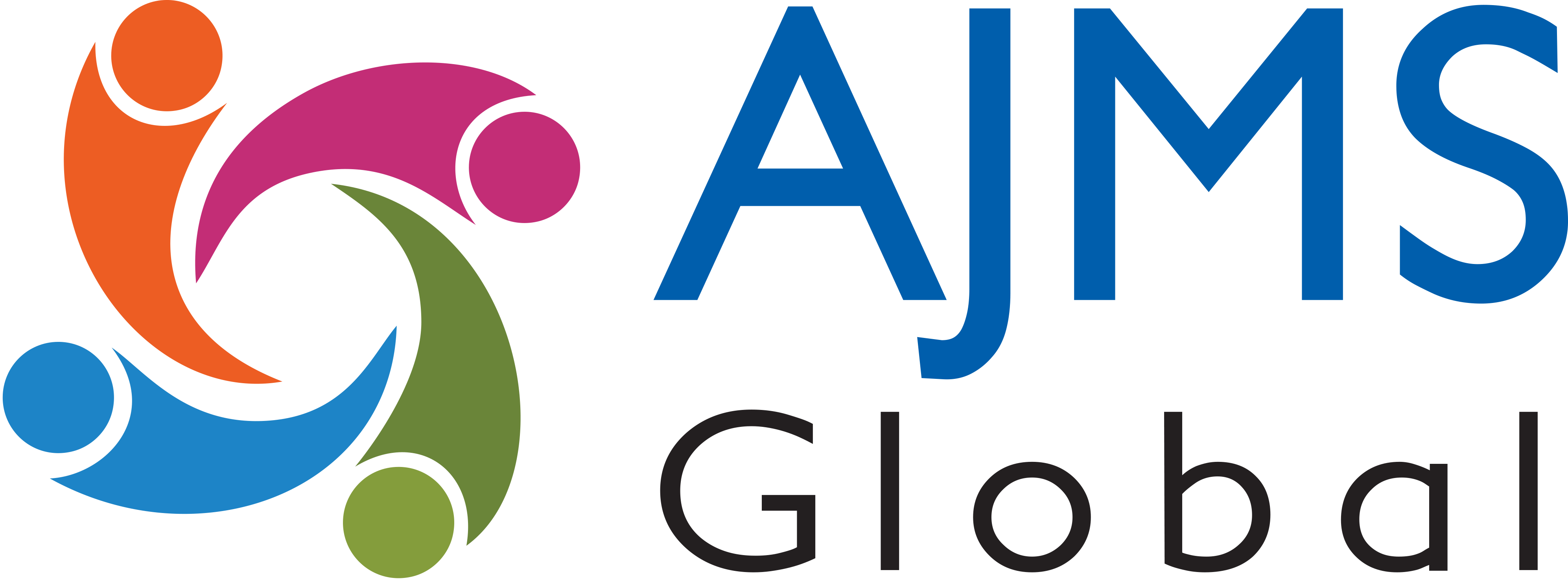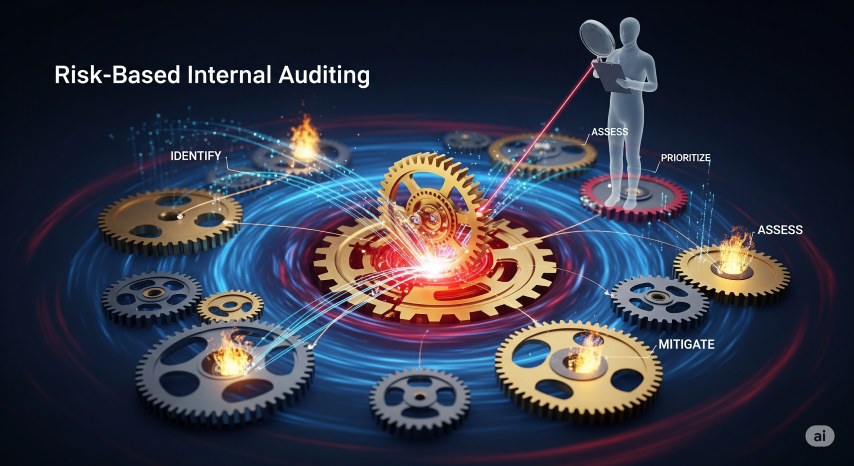In a fast-evolving business landscape where risks are ever-changing, traditional internal auditing approaches often fall short of addressing modern organizational challenges. Risk-Based Internal Auditing (RBIA) has emerged as a forward-thinking methodology that ensures internal audit efforts are focused on the most critical areas of risk. By aligning audit priorities with an organization’s strategic objectives and risk profile, RBIA delivers greater value, improves efficiency, and strengthens organizational resilience.
This blog delves into the core principles of RBIA, its benefits, and how organizations can implement it effectively to thrive in a risk-intensive environment.
What is Risk-Based Internal Auditing?
RBIA represents a shift from traditional, routine internal audits toward a more dynamic approach. Rather than focusing on cyclical processes or checklists, RBIA concentrates on identifying and addressing high-risk areas within an organization. These risks could stem from various sources, including regulatory changes, market volatility, cybersecurity threats, or operational inefficiencies.
The central idea is that not all risks carry the same potential impact. By assessing the likelihood and severity of risks, RBIA helps organizations allocate their audit resources efficiently, ensuring critical threats are mitigated before they escalate.
Why is RBIA Crucial for Modern Organizations?
- Efficient Use of Resources:
Traditional audits often dedicate equal attention to all areas of an organization, regardless of their significance. RBIA eliminates this inefficiency by channelling resources into areas where the stakes are highest. - Proactive Risk Management:
Unlike conventional audits that focus on historical performance, RBIA adopts a forward-looking perspective. This approach enables organizations to anticipate potential challenges and act pre-emptively. - Enhanced Governance:
Boards and senior management require reliable assurance that key risks are being managed effectively. RBIA provides this assurance, strengthening governance frameworks and boosting stakeholder confidence. - Regulatory Compliance:
With increasing regulatory scrutiny, organizations need robust mechanisms to identify and address compliance risks. RBIA ensures these risks are given the priority they deserve. - Alignment with Strategic Goals:
By focusing on risks that directly impact organizational objectives, RBIA ensures that audit activities contribute to broader business success.
Key Elements of a Successful RBIA Framework
To unlock the full potential of RBIA, organizations must build a robust framework grounded in the following elements:
1. Comprehensive Risk Assessment
The foundation of RBIA lies in understanding an organization’s unique risk profile. This involves identifying risks across all functions, evaluating their potential impact, and prioritizing them based on their significance. Engaging key stakeholders during this process ensures a holistic view of organizational risks.
2. Dynamic Audit Planning
RBIA requires a flexible audit plan that evolves with the risk landscape. A static, one-size-fits-all plan is inadequate in today’s volatile business environment. Regular updates to the plan ensure that emerging risks are promptly addressed.
3. Integration with Enterprise Risk Management (ERM)
RBIA works best when integrated with an organization’s broader risk management processes. Collaboration between internal audit teams and risk management functions ensures consistency and avoids duplication of efforts.
4. Skilled Audit Teams
The success of RBIA depends on the expertise of internal auditors. Auditors must possess not only technical knowledge but also strong analytical and communication skills to assess risks effectively and provide actionable insights.
5. Technology and Data Analytics
Modern auditing relies heavily on technology. Advanced data analytics tools help auditors identify patterns, trends, and anomalies that could indicate potential risks. These tools also enable real-time monitoring, enhancing the effectiveness of the audit process.
The Process of Implementing RBIA
- Risk Identification:
Begin by mapping out all potential risks across the organization. This includes financial, operational, regulatory, and reputational risks. - Risk Prioritization:
Evaluate each risk based on its likelihood and potential impact. High-priority risks should take precedence in the audit plan. - Audit Execution:
Conduct focused audits on the prioritized areas. The objective is not just to identify gaps but also to recommend practical solutions for mitigating risks. - Reporting:
Communicate findings clearly to stakeholders, emphasizing the implications of identified risks and the urgency of corrective actions. - Continuous Improvement:
The risk landscape is constantly evolving. Organizations must regularly revisit their RBIA framework to ensure it remains relevant and effective.
Benefits of RBIA for Organizations
Organizations that adopt RBIA often experience transformative benefits, including:
- Improved Risk Awareness: Regular audits of high-risk areas foster a culture of vigilance and accountability.
- Increased Audit Credibility: Focused audits that deliver actionable insights enhance the credibility of the internal audit function.
- Strategic Decision-Making: By providing a clearer understanding of risks, RBIA equips management with the information needed to make informed decisions.
- Cost Savings: Efficient allocation of audit resources reduces unnecessary expenditures.
Challenges in RBIA Implementation
Despite its advantages, implementing RBIA comes with challenges. These include:
- Resistance to Change: Employees and management accustomed to traditional audits may be hesitant to adopt a new approach.
- Resource Constraints: Smaller organizations may struggle to allocate sufficient resources for comprehensive risk assessments.
- Skill Gaps: Auditors may require additional training to adapt to the RBIA methodology.
Addressing these challenges requires strong leadership and a commitment to fostering a culture of continuous improvement.
How AJMS Global Can Help
AJMS Global, a boutique consulting firm specializing in Tax, Risk, Compliance, IFRS advisory, and Digital Transformation Advisory, can assist organizations in implementing and optimizing their Risk-Based Internal Audit (RBIA) frameworks. Their experienced consultants can provide valuable guidance on:
- Conducting thorough risk assessments: Identifying and prioritizing key risks across the organization.
- Developing and implementing effective RBIA programs: Designing and executing audit plans that align with organizational objectives and risk profiles.
- Improving audit quality: Enhancing the efficiency and effectiveness of audit processes through the use of data analytics and other modern techniques.
- Ensuring compliance with relevant regulations: Assisting organizations in meeting regulatory requirements related to internal controls and risk management.
- Building a strong risk culture: Fostering a culture of risk awareness and accountability within the organization.
By leveraging the expertise of AJMS Global, organizations can effectively implement RBIA, improve their risk management capabilities, and enhance their overall business performance.
Conclusion
Risk-Based Internal Auditing is no longer a luxury—it’s a necessity in today’s complex business environment. By prioritizing high-risk areas, aligning audit activities with strategic objectives, and leveraging advanced tools, RBIA empowers organizations to build resilience and drive long-term success.
If you’re ready to elevate your internal audit processes, explore the expertise of AJMS Global. Our experienced team can provide tailored solutions to help you optimize your risk management and auditing practices.

